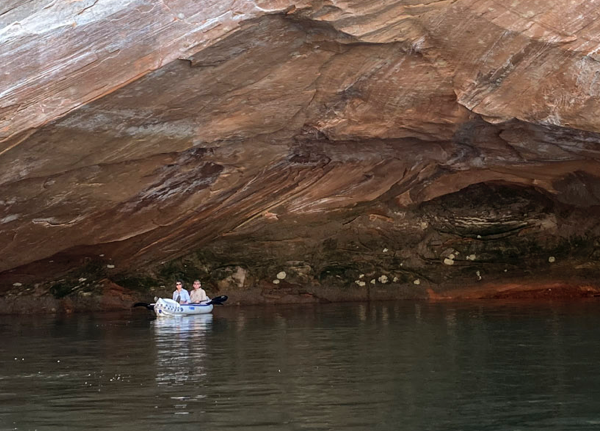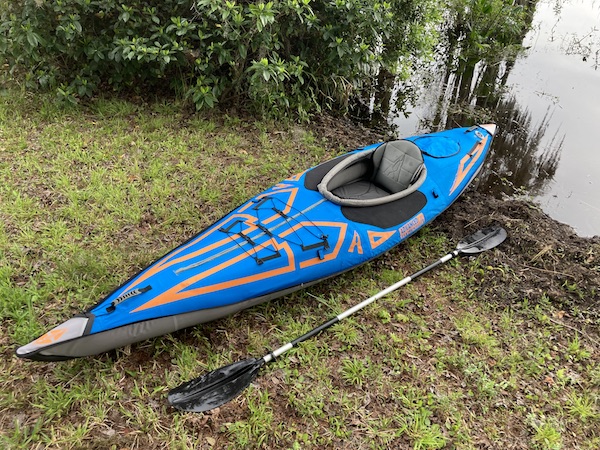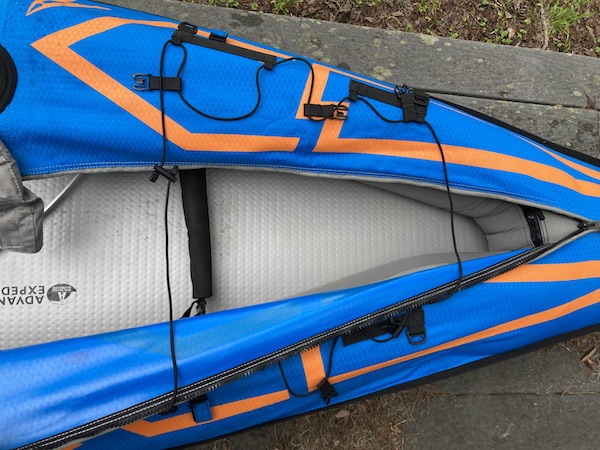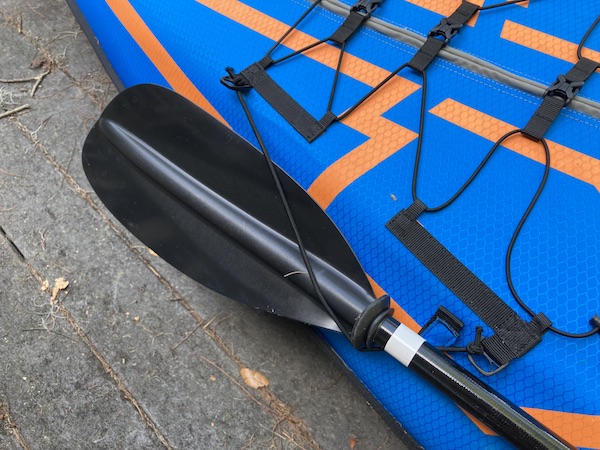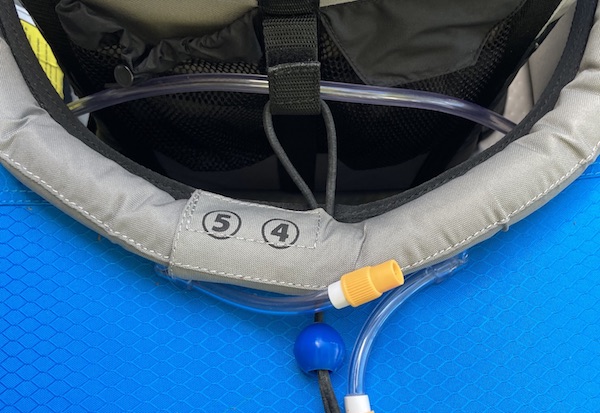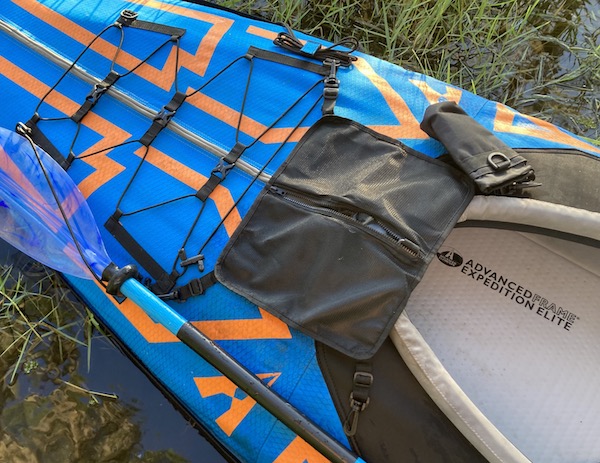Advanced Elements Expedition Elite Kayak
I’ve used a “traditional” inflatable kayak for several years, mostly in special situations such as houseboat camping or floating down rivers. They can be very practical and lots of fun in these settings. They are bouncy and sit high in the water, more like life-rafts than kayaks. The one thing they are not good for is a windy day on open water!
So I was intrigued when I read about newer designs that approximate the capabilities of hard-sided kayaks. Advanced Elements produces several models including the Expedition Elite reviewed here.
The boat is nominally 13 feet long and weighs in at around 42 pounds (not as heavy as it sounds when you consider the design). It is rated to carry up to 400 pounds. The materials, fit, and finish are all very good to excellent. I’ve had a chance to use this kayak in 20 mph winds on a large lake, and on a small river with minor rapids. It performed well in both situations.
There are several notable design features:
1) Short aluminum frames define the prow and stern.
2) The drop-stitched floor is very rigid (similar to a standup paddle-board).
3) Two concentric floatation chambers (rings) provide redundancy in case of damage/air loss.
4) Seven auxiliary inflatable compartments define the semi-rigid deck.
5) An outer envelope gives the boat shape and protects everything else.
There are a total of eleven separate inflatable elements when you include the seat and optional rear “thwart”. Only three of these provide primary floatation (the outer ring, inner ring, and floor). Inflation pressure is low (1-2psi) except the floor (4-5psi). All components noticeably lose some pressure after a day or two. It takes a bit of effort to keep everything topped off.
The entire kayak (potentially including the pump and paddle) folds up into a suitcase-sized duffle. I’ve had some difficulty folding and unfolding it smoothly. When folded there are six or more layers that must slide over each other without binding. Inflation leads to asymmetries that make me think I’ve done something out of order. There is an example in the photo below where you can see the right inner ring bulging towards the midline. I’m not sure if this is some subtle configuration problem or the boat is just built that way. These are minor aesthetic issues to that don’t appear to affect performance.
Other Details
I’m over six foot tall and this kayak is just barely big enough for me to get my legs in. The photo below shows the bow zipper opened to reveal the adjustable footrest and limited storage space beyond. (Also note the dimples of the drop-stitched floor.) The more substantial rear storage area has a clever hatch that rolls up like a dry bag.
The biggest deficiency/flaw so far has been the position of tie-downs for the paddle and gear. There are two velcro attachment points on each side for holding a paddle, however the forward points are too far away to be useful. I remedied this by tying a short length of shockcord between the existing d-rings. The other end of the paddle fits nicely into the rear velcro strap.
Another irritation was the seat falling out when I picked the kayak up to move it. There was no attachment behind the seat so I added one using an elastic toggle.
I have a similar problem storing small gear. My other kayaks have easily accessed cubbies for gear and slots for water bottles. Again the attachment points on this boat are all too far forward. I’m thinking of adding d-rings to the black side panels to attach a deck bag.
Bottom Line
Pros
- Lightweight compared with plastic or fiberglass equivalents.
- Subjectively 80% of the feel and performance of a hard-sided kayak.
- Less vulnerable to waves than you’d think. (An optional skirt is available.)
- Enough floatation to carry a significant amount of gear.
- Very portable. Packs into a single duffle!
Cons
- Leg area somewhat cramped for taller paddlers.
- Gear attachment issues outlined above.
- Need to top off inflation frequently.
- Complicated, many parts that can move in or out of place.
Overall this is a very functional kayak, even compared with hard-sided models. The combination of partial frame and drop-stitched floor give it a solid feel on the water. Plus you can carry it in the trunk of your car and store it in the back of a closet!

